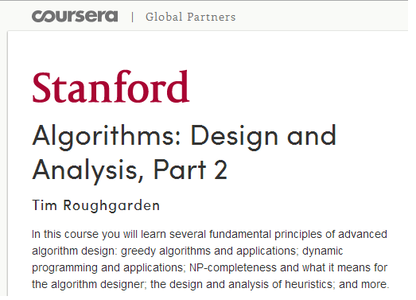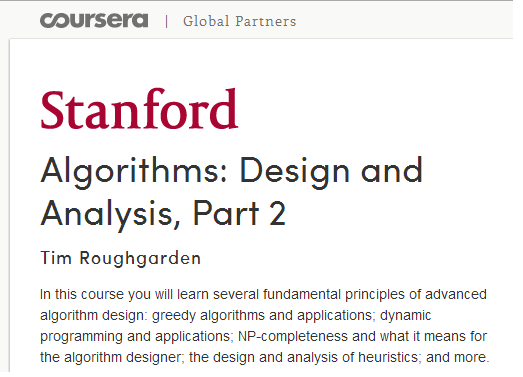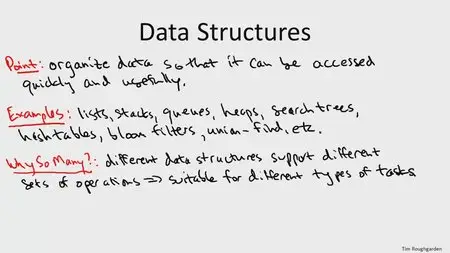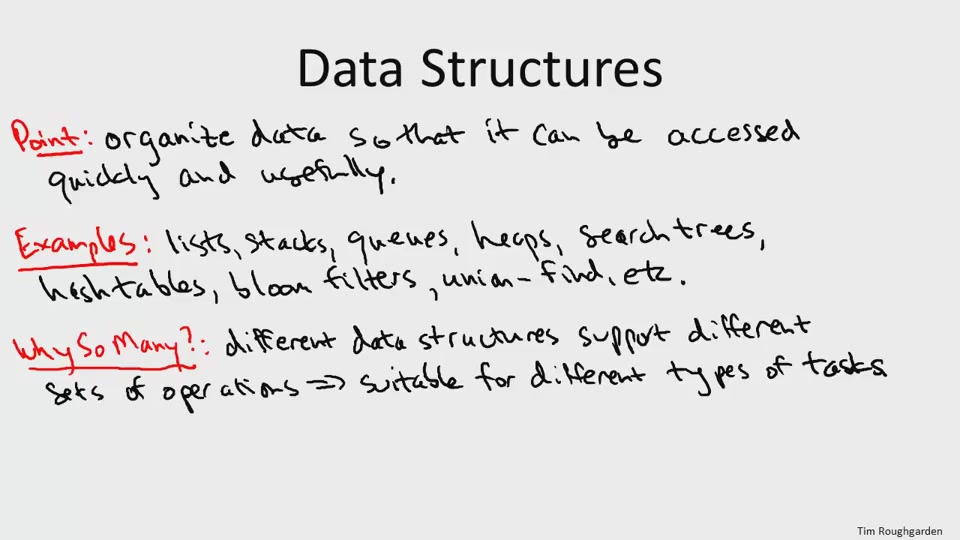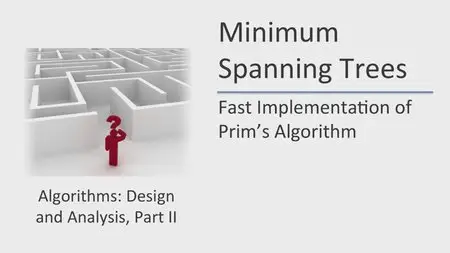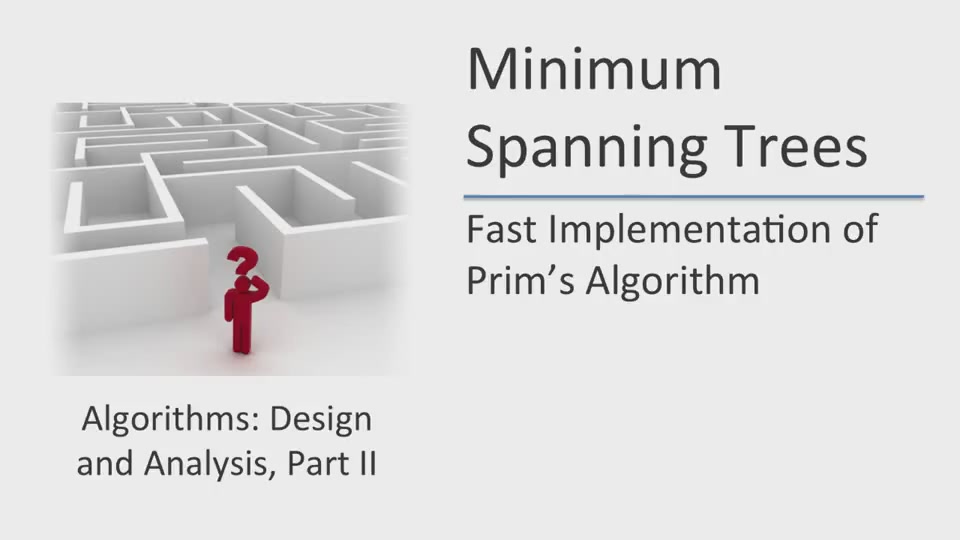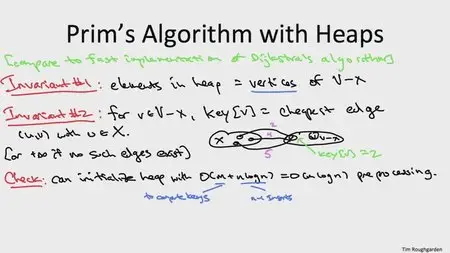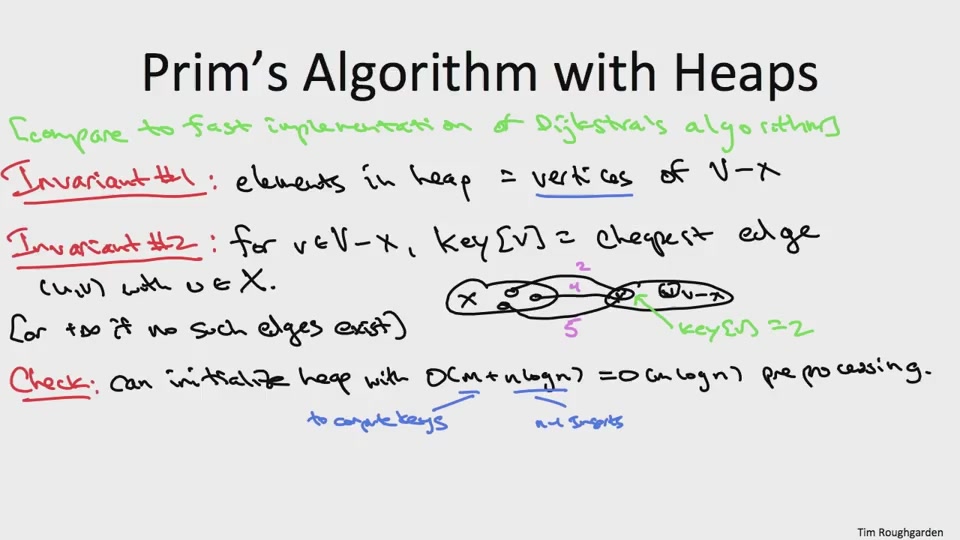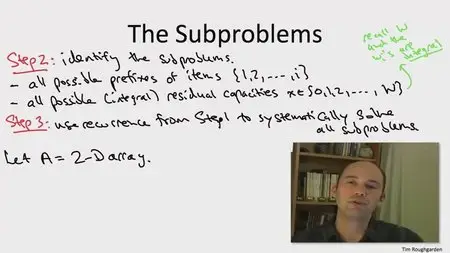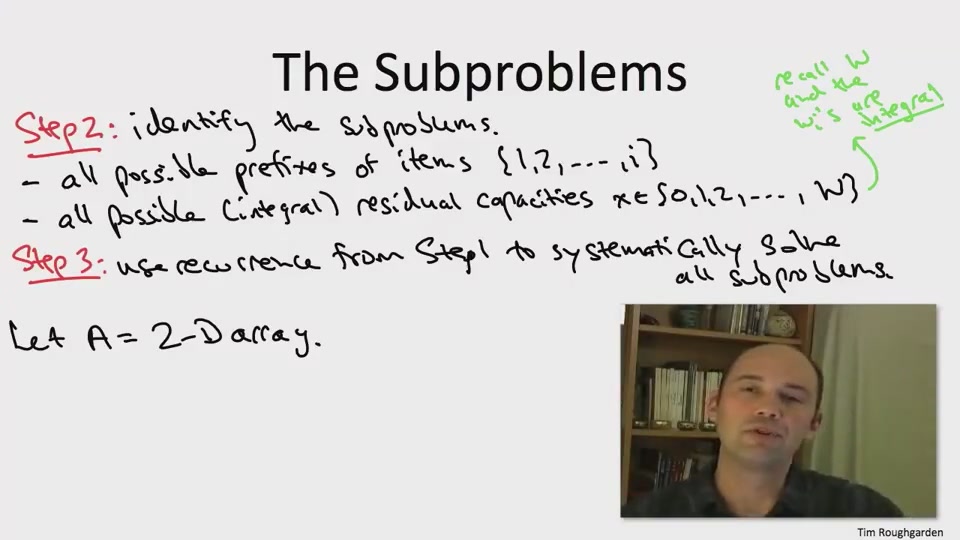Stanford University: Coursera - Algorithms: Design and Analysis, Part 2
English | MP4 | 960 x 540 | AVC ~22.1 kbps | 15 fps
AAC | 122 Kbps | 44.1 KHz | 2 channels | Subs: English (srt) | 19:04:49 | 1.52 GB
AAC | 122 Kbps | 44.1 KHz | 2 channels | Subs: English (srt) | 19:04:49 | 1.52 GB
Genre: eLearning Video / Computer Science: Theory
In this course you will learn several fundamental principles of advanced algorithm design. You'll learn the greedy algorithm design paradigm, with applications to computing good network backbones (i.e., spanning trees) and good codes for data compression. You'll learn the tricky yet widely applicable dynamic programming algorithm design paradigm, with applications to routing in the Internet and sequencing genome fragments. You’ll learn what NP-completeness and the famous “P vs. NP” problem mean for the algorithm designer. Finally, we’ll study several strategies for dealing with hard (i.e., NP-complete problems), including the design and analysis of heuristics. Learn how shortest-path algorithms from the 1950s (i.e., pre-ARPANET!) govern the way that your Internet traffic gets routed today; why efficient algorithms are fundamental to modern genomics; and how to make a million bucks in prize money by “just” solving a math problem!
Weeks 1 and 2: The greedy algorithm design paradigm. Applications to optimal caching and scheduling. Minimum spanning trees and applications to clustering. The union-find data structure. Optimal data compression.
Weeks 3 and 4: The dynamic programming design paradigm. Applications to the knapsack problem, sequence alignment, shortest-path routing, and optimal search trees.
Weeks 5 and 6: Intractable problems and what to do about them. NP-completeness and the P vs. NP question. Solvable special cases. Heuristics with provable performance guarantees. Local search. Exponential-time algorithms that beat brute-force search.
Weeks 3 and 4: The dynamic programming design paradigm. Applications to the knapsack problem, sequence alignment, shortest-path routing, and optimal search trees.
Weeks 5 and 6: Intractable problems and what to do about them. NP-completeness and the P vs. NP question. Solvable special cases. Heuristics with provable performance guarantees. Local search. Exponential-time algorithms that beat brute-force search.
More Info: https://www.coursera.org/course/algo2
first part: Algorithms: Design and Analysis, Part 1
General
Complete name : 2 - 8 - Data Structures Overview (5 min) [2f97a690] .mp4
Format : MPEG-4
Format profile : Base Media
Codec ID : isom
File size : 4.89 MiB
Duration : 4mn 36s
Overall bit rate mode : Variable
Overall bit rate : 149 Kbps
Writing application : Lavf53.29.100
Video #1
ID : 1
Format : AVC
Format/Info : Advanced Video Codec
Format profile : High@L3.1
Format settings, CABAC : Yes
Format settings, ReFrames : 4 frames
Codec ID : avc1
Codec ID/Info : Advanced Video Coding
Duration : 4mn 36s
Bit rate : 22.1 Kbps
Width : 960 pixels
Height : 540 pixels
Display aspect ratio : 16:9
Frame rate mode : Constant
Frame rate : 15.000 fps
Color space : YUV
Chroma subsampling : 4:2:0
Bit depth : 8 bits
Scan type : Progressive
Bits/(Pixel*Frame) : 0.003
Stream size : 745 KiB (15%)
Writing library : x264 core 120 r2120 0c7dab9
Encoding settings : cabac=1 / ref=3 / deblock=1:0:0 / analyse=0x3:0x113 / me=hex / subme=7 / psy=1 / psy_rd=1.00:0.00 / mixed_ref=1 / me_range=16 / chroma_me=1 / trellis=1 / 8x8dct=1 / cqm=0 / deadzone=21,11 / fast_pskip=1 / chroma_qp_offset=-2 / threads=12 / sliced_threads=0 / nr=0 / decimate=1 / interlaced=0 / bluray_compat=0 / constrained_intra=0 / bframes=3 / b_pyramid=2 / b_adapt=1 / b_bias=0 / direct=1 / weightb=1 / open_gop=0 / weightp=2 / keyint=250 / keyint_min=15 / scenecut=40 / intra_refresh=0 / rc_lookahead=40 / rc=crf / mbtree=1 / crf=28.0 / qcomp=0.60 / qpmin=0 / qpmax=69 / qpstep=4 / ip_ratio=1.40 / aq=1:1.00
Audio #2
ID : 2
Format : AAC
Format/Info : Advanced Audio Codec
Format profile : LC
Codec ID : 40
Duration : 4mn 36s
Bit rate mode : Variable
Bit rate : 122 Kbps
Maximum bit rate : 128 Kbps
Channel(s) : 2 channels
Channel positions : Front: L R
Sampling rate : 44.1 KHz
Compression mode : Lossy
Stream size : 4.03 MiB (82%)
Complete name : 2 - 8 - Data Structures Overview (5 min) [2f97a690] .mp4
Format : MPEG-4
Format profile : Base Media
Codec ID : isom
File size : 4.89 MiB
Duration : 4mn 36s
Overall bit rate mode : Variable
Overall bit rate : 149 Kbps
Writing application : Lavf53.29.100
Video #1
ID : 1
Format : AVC
Format/Info : Advanced Video Codec
Format profile : High@L3.1
Format settings, CABAC : Yes
Format settings, ReFrames : 4 frames
Codec ID : avc1
Codec ID/Info : Advanced Video Coding
Duration : 4mn 36s
Bit rate : 22.1 Kbps
Width : 960 pixels
Height : 540 pixels
Display aspect ratio : 16:9
Frame rate mode : Constant
Frame rate : 15.000 fps
Color space : YUV
Chroma subsampling : 4:2:0
Bit depth : 8 bits
Scan type : Progressive
Bits/(Pixel*Frame) : 0.003
Stream size : 745 KiB (15%)
Writing library : x264 core 120 r2120 0c7dab9
Encoding settings : cabac=1 / ref=3 / deblock=1:0:0 / analyse=0x3:0x113 / me=hex / subme=7 / psy=1 / psy_rd=1.00:0.00 / mixed_ref=1 / me_range=16 / chroma_me=1 / trellis=1 / 8x8dct=1 / cqm=0 / deadzone=21,11 / fast_pskip=1 / chroma_qp_offset=-2 / threads=12 / sliced_threads=0 / nr=0 / decimate=1 / interlaced=0 / bluray_compat=0 / constrained_intra=0 / bframes=3 / b_pyramid=2 / b_adapt=1 / b_bias=0 / direct=1 / weightb=1 / open_gop=0 / weightp=2 / keyint=250 / keyint_min=15 / scenecut=40 / intra_refresh=0 / rc_lookahead=40 / rc=crf / mbtree=1 / crf=28.0 / qcomp=0.60 / qpmin=0 / qpmax=69 / qpstep=4 / ip_ratio=1.40 / aq=1:1.00
Audio #2
ID : 2
Format : AAC
Format/Info : Advanced Audio Codec
Format profile : LC
Codec ID : 40
Duration : 4mn 36s
Bit rate mode : Variable
Bit rate : 122 Kbps
Maximum bit rate : 128 Kbps
Channel(s) : 2 channels
Channel positions : Front: L R
Sampling rate : 44.1 KHz
Compression mode : Lossy
Stream size : 4.03 MiB (82%)
Screenshots


